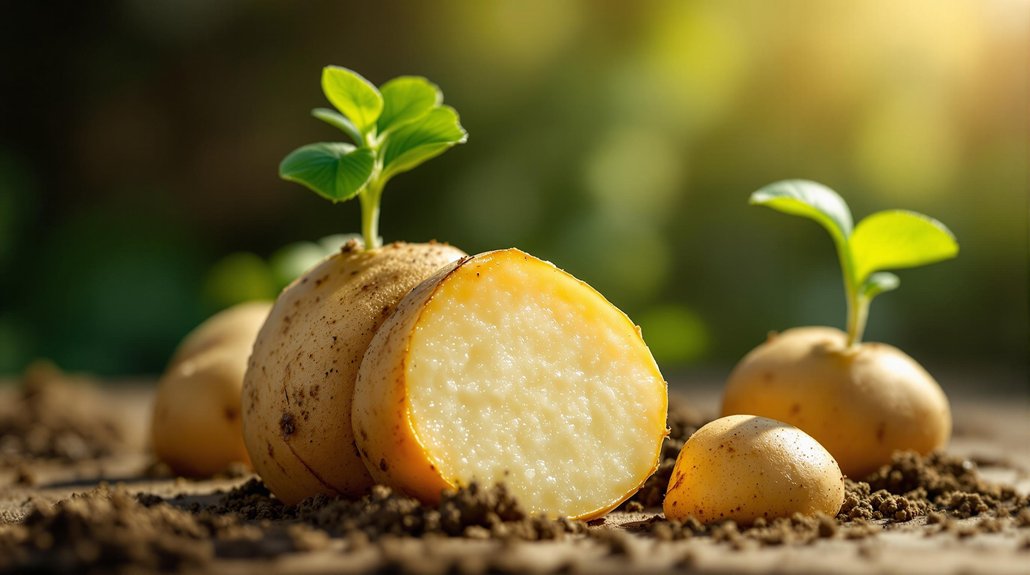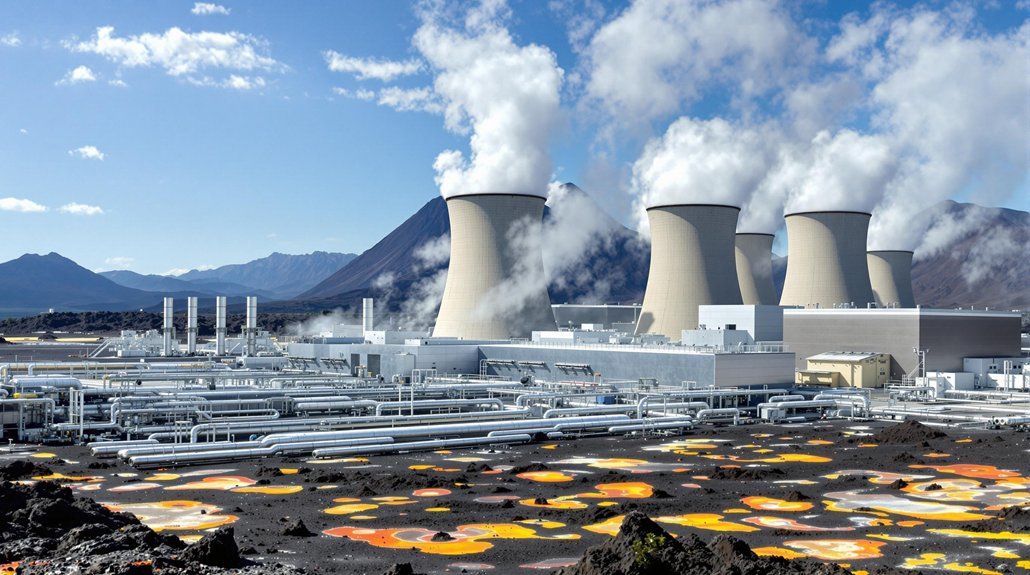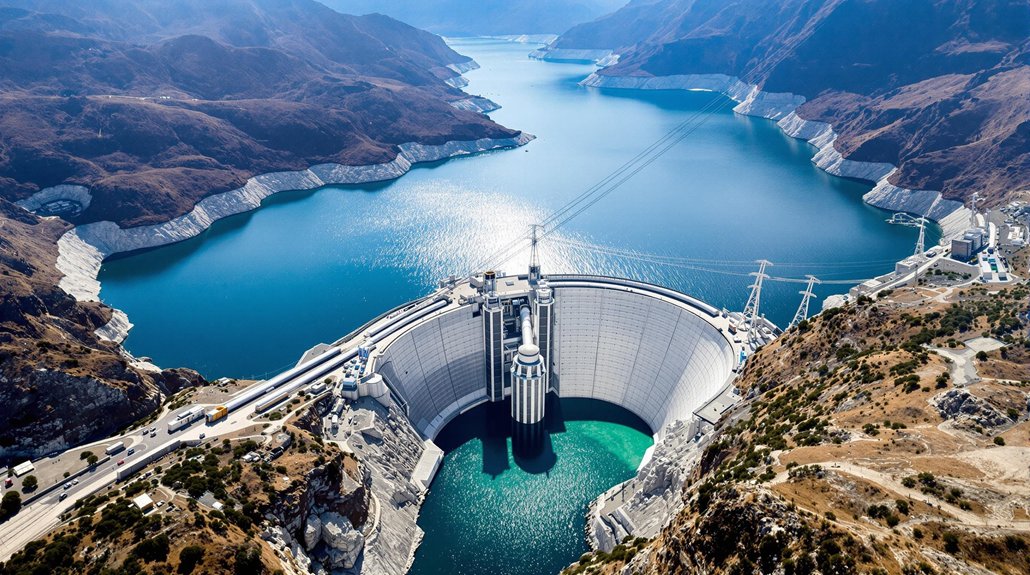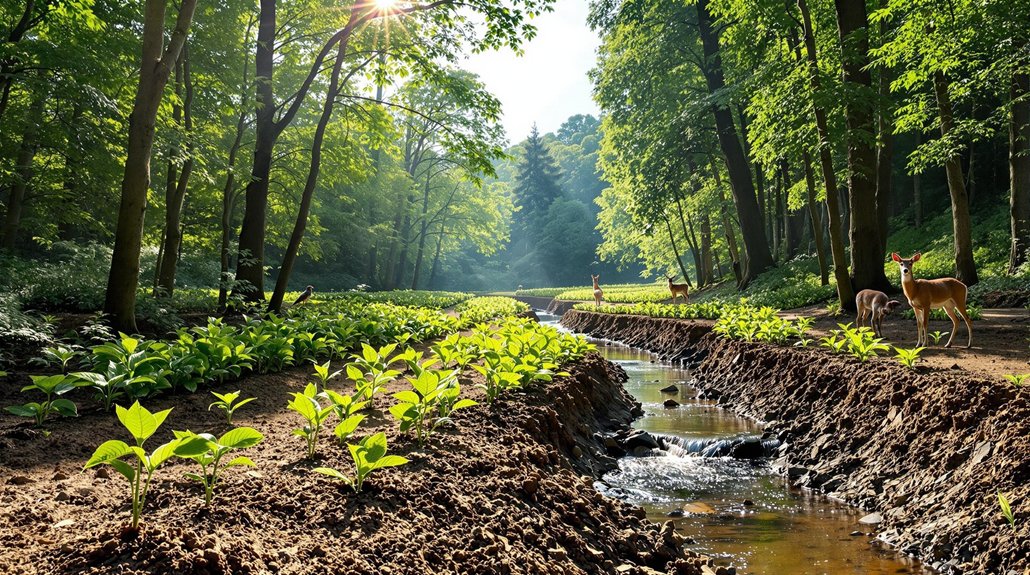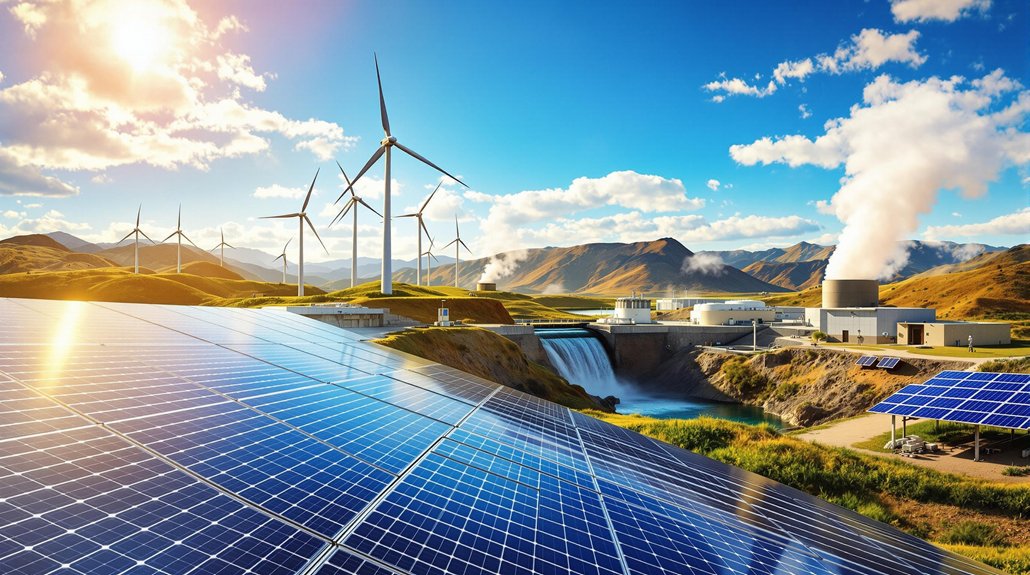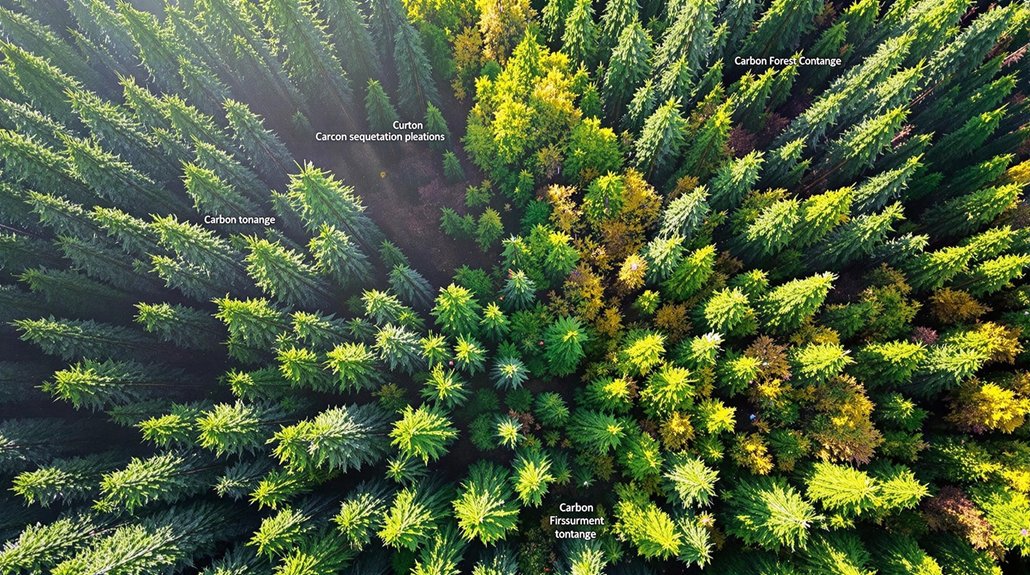Plants store energy primarily as starch, which forms after photosynthesis converts sunlight into glucose. This starch comes in two types: transitory starch in leaves for nighttime use, and storage starch in roots, seeds, and stems for long-term needs. Some plants also store energy as oils or sugars. These energy reserves power growth, reproduction, and survival during unfavorable conditions. The plant kingdom’s diverse storage strategies reveal nature’s ingenious solutions.
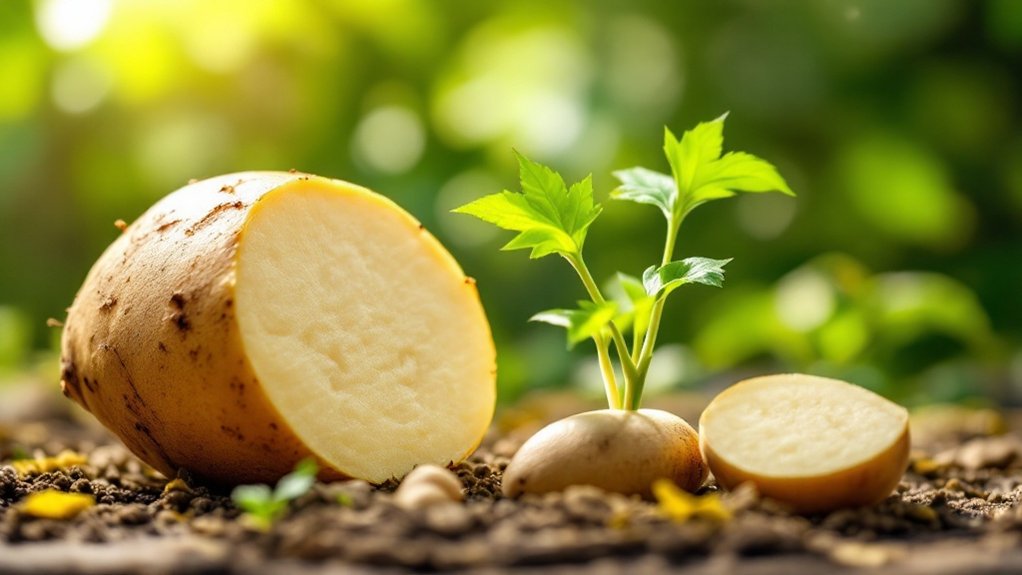
While humans get energy from food, plants have a remarkable system for capturing and storing energy from sunlight. Through photosynthesis, plants convert light energy into chemical energy in specialized cell structures called chloroplasts. This process requires carbon dioxide from the air, water from the soil, and sunlight. As plants capture this energy, they produce glucose as their main fuel source and release oxygen into the air as a byproduct.
Nature’s solar panels transform sunlight into life-giving energy, gifting us oxygen while fueling their own existence.
Plants don’t use all their glucose right away. Instead, they convert excess glucose into starch, which serves as their primary energy storage molecule. Starch is made up of two components: amylose and amylopectin. This energy storage system is efficient because starch is insoluble, meaning it doesn’t dissolve in water and can be packed tightly within plant cells.
There are two main types of starch in plants. Transitory starch is made in leaves during daylight hours when photosynthesis occurs. At night, when there’s no sunlight for photosynthesis, plants break down this temporary starch to continue powering their metabolism. Plants that can’t make transitory starch properly often grow slowly and struggle to survive. This strategy is similar to how modern supercapacitors enable rapid energy storage and release in technology systems.
Storage starch is found in non-photosynthetic parts like seeds, stems, and roots. This type of starch remains stored for longer periods and can make up 70-80% of the dry weight in some crops. When a seed germinates or when a plant needs to regrow, this starch provides the necessary energy. The starch molecules form a dense structure that maximizes energy storage efficiency within limited plant tissue space.
The starch is packaged in semi-crystalline structures called starch granules. These granules vary in size and shape depending on the plant species. They contain rare phosphate groups that help plants break down the starch when energy is needed.
Some plants use alternative energy storage methods. Instead of starch, they might store energy as oils, fats, or sugars like fructans. Specialized plant structures such as bulbs and rhizomes serve as energy warehouses. CAM plants even store organic acids at night to help with photosynthesis during the day. These diverse strategies guarantee plants can thrive in different environments.
Frequently Asked Questions
Can Plants Share Stored Energy With Neighboring Plants?
Plants can share stored energy with neighboring plants through underground networks called mycorrhizal fungi.
These fungal connections act like highways, transferring sugars, nutrients, and water between plants. When one plant captures sunlight, it can send excess carbon to nearby plants that need it.
Scientists have found that mature trees often support seedlings, and sun-exposed plants help shaded neighbors through these connections.
This sharing helps forest communities survive tough conditions.
Do Indoor Plants Store Energy Differently Than Outdoor Plants?
Indoor plants store energy in a comparable manner to outdoor plants, but with key differences.
They both convert light to glucose through photosynthesis, but indoor plants adapt to lower light levels. Indoor plants often allocate more energy to leaves, while outdoor plants store more in roots.
With fewer environmental stressors, indoor plants typically maintain smaller energy reserves. Temperature stability indoors also affects how and when plants store their energy.
How Does Climate Change Affect Plants’ Energy Storage Capabilities?
Climate change affects plants’ energy storage in several ways. Rising CO2 levels initially boost photosynthesis, allowing plants to store more energy.
However, extreme heat reduces enzyme efficiency, limiting this benefit. Drought stress makes it harder for plants to absorb carbon.
While some species adapt better than others, many plants must reallocate energy from storage to survival under stress. This shifts their energy balance toward immediate needs rather than reserves.
Can Humans Harness Energy Directly From Plant Storage Systems?
Scientists are developing ways to tap energy directly from plants. Current methods include biophotovoltaics, which extract electrons from photosynthetic proteins, and plant microbial fuel cells that harvest electricity from living plants.
Nanobionic plants with embedded carbon nanotubes show promise for improved efficiency. These technologies aren’t yet as efficient as traditional solar panels and could potentially harm plant health.
Research continues to make plant-based energy systems more viable and cost-effective.
Do Carnivorous Plants Have Unique Energy Storage Mechanisms?
Carnivorous plants do possess unique energy storage mechanisms. They store elastic energy in specialized leaf structures for rapid trap closure.
Venus flytraps, for example, bend their leaves to build tension, then release it in a snap when triggered.
Bladderworts use negative pressure in tiny bladders to suck in prey.
While they store carbohydrates like other plants, these elastic energy systems represent distinctive adaptations for capturing nutrient sources in poor soils.
